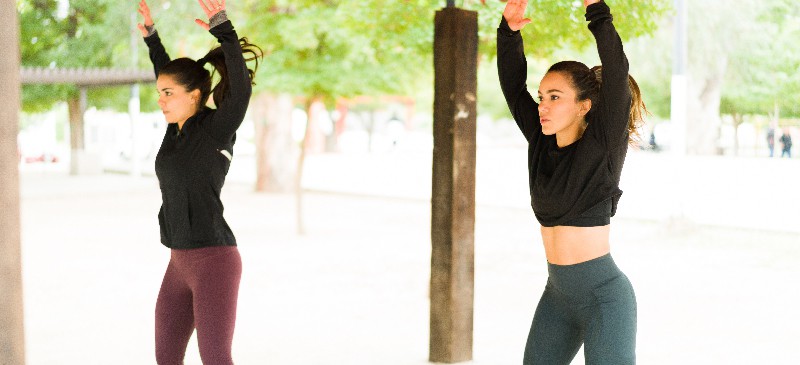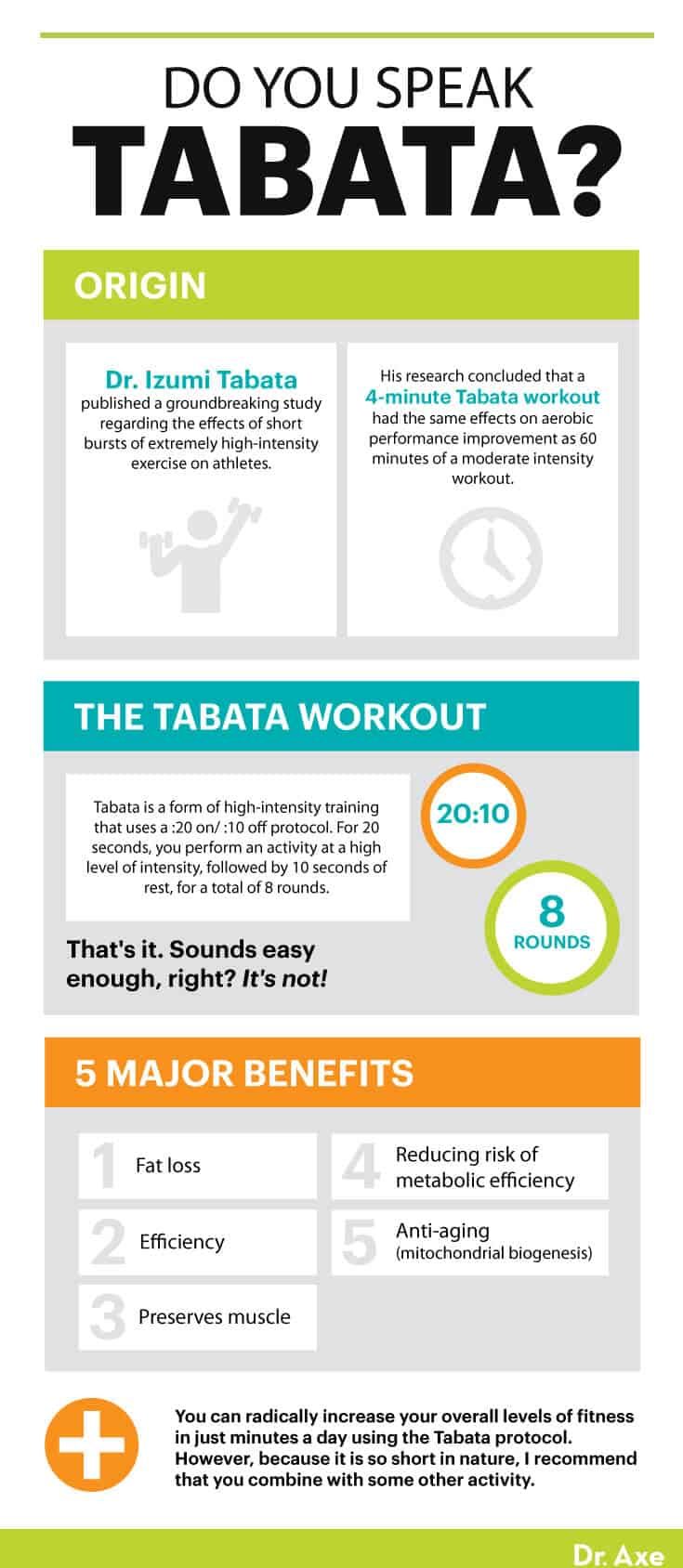This Dr. Axe content is medically reviewed or fact checked to ensure factually accurate information.
With strict editorial sourcing guidelines, we only link to academic research institutions, reputable media sites and, when research is available, medically peer-reviewed studies. Note that the numbers in parentheses (1, 2, etc.) are clickable links to these studies.
The information in our articles is NOT intended to replace a one-on-one relationship with a qualified health care professional and is not intended as medical advice.
This article is based on scientific evidence, written by experts and fact checked by our trained editorial staff. Note that the numbers in parentheses (1, 2, etc.) are clickable links to medically peer-reviewed studies.
Our team includes licensed nutritionists and dietitians, certified health education specialists, as well as certified strength and conditioning specialists, personal trainers and corrective exercise specialists. Our team aims to be not only thorough with its research, but also objective and unbiased.
The information in our articles is NOT intended to replace a one-on-one relationship with a qualified health care professional and is not intended as medical advice.
Tabata Workout: An Advanced 4-Minute HIIT to Try
March 17, 2023

The No. 1 reason (okay, after simply not wanting to) for not working out? Time, or lack thereof. With our fast-paced, always connected, never-enough-time-to-do-anything lifestyles, making time to get that workout in may seem like a Herculean task. In fact, it often requires exercise hacks because putting on workout clothes and getting to a place to get that sweat on … just takes too much time.
So even if it was on your to-do list to start the day, it might not last long. Wait … there is hope! Actually even better than hope, there is scientific evidence that suggests you can radically increase your overall levels of fitness in just minutes a day doing the Tabata workout.
The Tabata workout is a form of high-intensity training, or HIIT workouts, that uses a :20 on/:10 off ‘Tabata protocol.’ What that means is that for 20 seconds you perform an activity at a high level of intensity, followed by 10 seconds of rest, for a total of eight rounds.
Can the Tabata protocol be the answer we’ve been waiting for? If we want to oversimplify it, the answer is a resounding, “YES”! However, as you will see, like most things in life, it’s a little more complicated than that. One of the biggest obstacles to efficacy is the unfortunate truth that regardless of the proliferation of Tabata classes and workouts, you are most likely NOT performing the actual Tabata protocol.
What Is Tabata?
Back in 1996, Dr. Izumi Tabata published the groundbreaking study that would be the basis for the Tabata training method. It was through his collaboration with the Japanese Olympic Speed Skating team that he initially began to study the effects of short bursts of extremely high-intensity exercise on athletes. The skating team’s head coach, Irisawa Koichi, actually designed the workout.
Originally completed on a cycling ergometer (a stationary bike with an ergometer that measures the amount of work that’s performed), the format was 20 seconds of high-intensity work, followed by 10 seconds of rest repeated for eight rounds, giving it it a total time of four minutes. Koichi wanted Tabata to analyze the effectiveness of this method.
The test looked at two groups of amateur athletic males in their mid-20s. The first group performed familiar, steady-state training on the ergometer, maintaining a moderate intensity of about 70 percent of their VO2 max. Pretty similar to what you may do at the gym when you’re jogging on the treadmill. It’s work, but it’s sustainable.
The second group pedaled at maximal effort for 20 seconds and were then given 10 seconds of rest. This cycle was repeated for four minutes or what would essentially be eight rounds. The term maximal effort (170 percent of VO2 max) becomes important here, as the 20 seconds of work were to be sprints. If the participants were no longer able to maintain the speed requirements, they were asked to stop after completing just 7 rounds.
Both of the groups did this for six weeks, five times a week. The group of moderate-intensity participants worked a total of five hours, while the high-intensity subjects topped out at just 20 minutes.
The research concluded that the 4-minute Tabata workout had the same effects on aerobic performance improvement as the 60 minutes of moderate-intensity workout. In addition, the Tabata group also experienced a 28 percent improvement in their anaerobic capacity as well. The long-duration group did not get that benefit. Not only is Tabata a much shorter workout, but it offers two benefits in one.

Tabata vs. Interval Training
One of the most frequently asked questions regarding Tabata workouts is, “what’s the difference between Tabata and HIIT (High-Intensity Interval Training)?” The most notable difference comes down to timing.
In a Tabata training session, the work and rest periods are shorter than they are in HIIT. The theory being that the shorter the session, the higher the intensity will be. Remember, in the original research the whole workout was four minutes of trying to work at 170 percent.
In HIIT, participants are aiming for only 80–95 percent of maximum heart rate. Meanwhile, the work-to-rest ratios associated with more conventional interval training programs is usually 1 or 2 minutes of work followed by anywhere from 30 seconds, up to 2 minutes of recovery.
Benefits
1. Fat Loss
In order to lose weight, we have always been told that the best way to do that is cardio exercise. But some research shows that the effect of regular aerobic exercise for weight loss is negligible and that short bouts of high-intensity exercise is a lot more effective for reducing fat.
When trying to figure how to lose weight fast, Tabata is a type of exercise worth considering. It’s also one of the great weight loss tips for women.
2. Efficiency
When done properly, Tabata workouts are short but tough. When you can get such an effective workout done in just a few minutes, it becomes a lot harder to use “not having time” as an excuse.
3. Reduces Risk of Metabolic Syndrome
Metabolic syndrome is a metabolic disorder that involves not one, but a combination of three or more of the following health issues: abdominal obesity, high blood sugar, high triglyceride levels, high blood pressure or low HDL (“good”) cholesterol. But high-intensity exercise has been shown to be an important factor in improving aerobic capacity and reversing the risk factors for metabolic syndrome.
4. Preserves Muscle
Muscle deterioration is associated with long sessions of steady-state cardio, while Tabata has been shown to increase levels of testosterone, which can actually help preserve or even build muscle. When you are trying to drop a few pounds, it’s the fat you want to lose, not the muscle.
5. Fountain of Youth
Mitochondrial dysfunction has been shown to be an important component of different diseases associated with aging, such as Type 2 diabetes and Alzheimer’s disease. Even though your body’s ability to produce mitochondria declines with age, research shows that intervals of high intensity work can trigger what mitochondrial biogenesis, which is the formation of new mitochondria in your cells.
Tabata Workout Protocol
Before you get out your Tabata timer, let’s discuss the best way to structure a Tabata workout for the hardest four minutes you’ve ever experienced. Keep in mind that the original research was done on a cycling ergometer, and you may or may not have access to one of those.
Also, remember that the 20-second work intervals were done at 170 percent of max effort. Again, you are more than likely not going to be doing anything close to that amount of work, nor is it recommended.
Most likely, you will want to choose a full-body movement that gets your whole body moving and quickly increases your heart rate. Rowing on a Concept 2 ergometer or sprinting on a grass field are a couple of good options. You can do burst training on a treadmill, too, but only if you feel comfortable hopping on and off. Sprinting on a treadmill can be a little tricky, so just be extra careful!
Once you have chosen your activity, make sure you do a warm-up before diving in. The participants in the original study warmed up for 10 minutes at 50 percent of their VO2 max before they started. Also, make sure you have some way to time your rounds. There are apps you can download, special timers you can buy, including fitness trackers, and even music that has cues for each round. You may just want a friend or partner to time it for you so they can cheer you on or just watch in amazement at the intensity of your workout.
After you’ve warmed up and have a way to time it all, you are ready to go. Remember, the challenge is to work as hard as you can for 20 seconds, rest for 10 seconds and repeat that cycle seven more times.
Okay, once you’re done with that four-minute workout, you likely will be exhausted but also wonder if there are other ways to do a longer workout that still have a Tabata influence. Here are some great moves to put together for a longer, Tabata-influenced workout routine.
Put these five bodyweight exercises together for a hardcore 10 minutes. (You also try a kettlebell workout with its five exercises.) Try to perform 10 reps of each move within about 20 seconds, then rest for 10 seconds before moving to next move. After each cycle, rest for 30 seconds before repeating 3 more times.
1. Push-Ups
Lying face-down on floor with hands slightly wider than shoulder width. Raise your body up off floor by extending arms with body straight. Keeping your body straight, lower yourself back down to the floor by bending your arms. Do push-ups on your knees if you can’t do a full-body push-up.
2. Squats
Squat down by bending hips back and allowing knees to bend forward, keep your back straight and knees pointed same direction as feet. Go down until your thighs are just past parallel to floor, stand back up and do it again.
3. Burpee or Squat Thrust
Bend over and squat down. Place both hands on the floor, just a little bit wider than your shoulders. While holding your upper body in place, jump your legs back into a plank position. Jump your legs back in underneath you and stand up. To make that same move a burpee, when you jump back into the plank exercise position, simply lower your chest to the ground. If you want to increase the intensity of either of those variations, do a little jump at the top instead of just standing up.
4. Vertical Jump
This is one of the great plyometric exercises. Pretty straightforward, squat down and jump up as high as possible, after landing, immediately jump up again. You can mix in a jumping jack as well.
5. Mountain Climbers
Begin in a push-up position, with your weight supported on your hands and toes. Start the move by bringing one leg in until the knee is approximately under the hip. Then, explosively reverse the positions of your legs, extending the bent leg until the leg is straight and supported by the toe, and bringing the other leg up and in.
Precautions
Tabata training is not recommended for beginners, and it’s better suited for someone who has been working out consistently and is comfortable with high-intensity exercise. There is also an increased risk for injury when performing exercises at a high-intensity for time, in part because exercise form can deteriorate.
Make sure you can complete all the moves with proper form (which becomes extra challenging when you begin to fatigue) and that you did a thorough warm-up. Be sure and pick moves that are appropriate for your current level of fitness and remember, everything can be modified. You may also consider building up your fitness levels for several weeks before taking on a Tabata workout.
Final Thoughts
Tabata training can be a fun way to shake up your current fitness routine. It’s fast and furious, and there certainly isn’t time to get bored.
- It won’t take you too many rounds to wonder how 20 seconds can feel like an eternity, or conversely, how 10 seconds can seem so fast.
- The key thing to remember is that you will need to challenge yourself with your level of intensity. Unless you’re extremely fit and have access to a cycling ergometer or rowing ergometer, you won’t be doing 8 rounds of anything at 170 percent of your max. Regardless, you will need to push yourself in order to get results.
- Your challenge is to see how many repetitions of a particular move you can get in each 20-second interval. Tabata never gets easier, you just keep doing more work!












